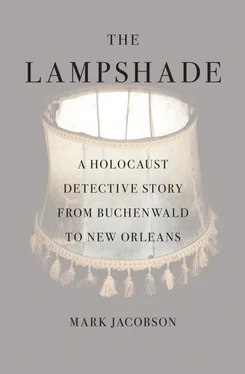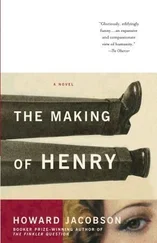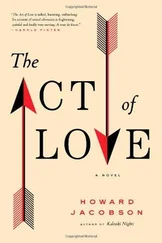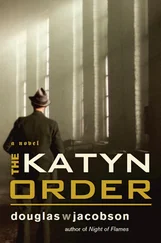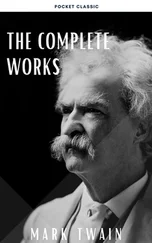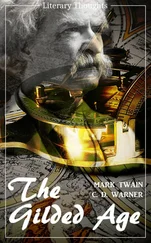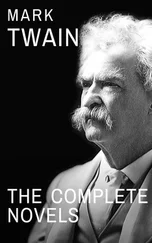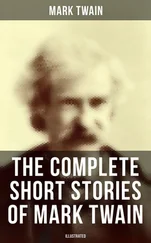Rosenberg was fascinated that a lampshade that might be from Buchenwald would turn up in post-Katrina New Orleans, especially since he himself had once lived in the Crescent City. Family members living in New Orleans’s Jewish community had helped him escape Germany in 1937 after he was almost beaten to death by storm troopers in his hometown of Göttingen.
“It was very terrible,” Rosenberg said. “These heavy boots thudding against my body, over and over again. My non-Jewish friends chased the thugs away. They saved my life. My jaw was broken, my spine wrecked. The pain from those injuries has been with me, on and off, ever since that day, but luckily, these people in New Orleans got me out.”
“Those were some of the best years of my life,” said Rosenberg of his time in New Orleans. He lived “on Johnson Street out by Tulane” and loved to take the streetcar along St. Charles Avenue. The memory of the swoosh of the trolley wheels over the rails along the grassy neutral ground, the branches of the trees making a canopy overhead, always made him smile.
“I spent a long time doing social work at the Desire Projects,” he recalled. “My job was to get people jobs, sign them up for government benefits, work out whatever problems I could. But it wasn’t easy; a lot of the time you’d set up appointments and no one would show up. It was hard to win trust. Everyone simply assumed anyone walking around with a badge or a clipboard was some kind of cop. You felt there was a lot of graft. One weekend I think seven people were murdered at Desire alone. But I must say I enjoyed the place, in spite of everything.” [17] The Desire Projects, 262 low-rise structures on outlying terrain on the way to New Orleans East, were built in 1949 as part of a major urban renewal effort. Known as “the dirty D,” the area was crime-ridden even before the famous streetcar (which never reached the projects) stopped running in the middle 1950s. When the projects were torn down in 2003, the area was slated for a major housing upgrade, a plan that was derailed by Katrina. Some new housing has been built, but anyone exiting the I-10 at Louisa Street cannot fail to be struck by the abject desolation of the area. The fact that many of the unpaved streets have names like Abundance, Benefit, and Humanity only adds to the end-of-the-world squalor. The lamentable state of the old Desire area has often been mentioned as a cautionary note by activists who protested the demolition of New Orleans’s other projects after Katrina.
New Orleans was “full of serendipity, good and bad,” Rosenberg said, remembering the days when he’d leave his office on Camp Street and see “this skinny, somewhat bedraggled figure handing out these leaflets. ‘Fair play for Cuba!’ he’d shout. Then, when Kennedy was shot, I knew right away, it was him—Oswald!—right there, on my lunch hour.
“When the hurricane hit, we were in the middle of a drought here,” Rosenberg recalled. “It hadn’t rained in I don’t know how long. The Rio Grande was drying up to a trickle. I’d watch the drought story on TV, and then they’d show New Orleans and I could see the places I’d enjoyed so much—Canal Street, Napoleon Avenue—completely underwater. Those poor people, on the rooftops. I truly felt like crying. And now you’re telling me about a lampshade made of human skin, from Buchenwald, washed up in the flood. My God!”
I told Rosenberg that I was likely to be in Albuquerque, New Mexico, five hours or so up the interstate from El Paso, within the next few weeks. Would it be all right if I stopped in for a chat?
“Absolutely!” Rosenberg said, there was a very nice Howard Johnson Express just a few blocks from his house if I wanted to stay over. Then he asked me if I knew a book titled Literature or Life, by Jorge Semprún.
“No,” I said, though Semprún’s name rang a dim, unidentified bell.
“You might find it interesting,” Rosenberg said.
Jorge Semprún was the grandson of Antonio Maura, a five-time prime minister of Spain. At the start of the Spanish Civil War, Semprún, a young teenager, was out of the country with his father. Refusing to return to Spain after Franco’s Nationalists took over, Semprún, a philosophy student, settled in France and later joined the Resistance. In 1943, the twenty-year-old Semprún was captured by the Gestapo and sent to Buchenwald, where he spent the rest of the war. In the years that followed, he wrote a number of books and screenplays, including Z, the celebrated Costa-Gavras film about the overthrow of the democratic government in Greece, which won two Academy Awards. He also wrote a number of films for Alain Resnais, maker of both Night and Fog and Hiroshima Mon Amour . In 1994 Semprún published the memoir Literature or Life, devoting a full chapter to his encounter with a man he calls Lieutenant Walter Rosenfeld but who is quite clearly Albert G. Rosenberg.
Semprún first sees “Lieutenant Rosenfeld” the day of the Weimar forced march. “In the crematory yard,” Semprún writes, an American lieutenant, speaking German, addressed several dozen Weimar residents, most of them women “wearing spring dresses in bright colors. The officer spoke in a neutral, implacable voice.
“‘Your pretty town,’ he told them, ‘so clean, so neat, brimming with cultural memories, the heart of classical and enlightened Germany, seems not to have had the slightest qualm about living in the smoke of the Nazi crematoria!’”
Two days later, Semprún writes, he found himself sitting opposite Rosenfeld in one of the SS command’s former offices. Semprún knew the Americans had decided to prepare “a comprehensive report on life and death in Buchenwald” and were especially interested in interviewing prisoners who’d participated in “the internal administration” of the camp. They included Semprún, who’d spent time working in the Arbeitsstatistik office, a plum assignment secured by his Communist connections, keeping track of inmate labor assignments. The two young men—Rosenfeld was twenty-six, Semprún twenty-one—hit it off and began a short-lived but highly resonant friendship.
As Semprún tells it, over the next week, Rosenfeld and Semprún, liberator and liberated, spend several hours in what Semprún calls “Goethe’s landscape.” Walking through the Ettersberg woods and hearing the birds in the trees, Semprún is “intoxicated” by “their songs, their trills, their warbles.” He tells Rosenfeld that for two years he rarely heard any birds; the smoke from the crematorium kept them away. They make their way along the Ilm River, to visit Goethe’s forest cottage, the country retreat where the master enjoyed “the twin delights of refreshing coolness and solitude.” Another day they drive in Rosenfeld’s jeep through the bombed-out streets of Weimar to see Goethe’s house, where an old watchman tells them no one is allowed into the great poet’s house without “special permission from the authorities.”
“I am the authority,” Rosenfeld tells the old man. “Authority with a capital A, all the authority imaginable.” When the watchman continues to protest, praising Hitler, saying how wonderful it was the last time the Führer had come to Weimar and stayed at the Elephant Hotel, Rosenfeld grabs the old Nazi by the collar, drags him over to a closet, and locks him inside, allowing the two friends to “complete our visit in peace, out of range of his despairing and malevolent voice.”
Mostly, Semprún and Rosenfeld discuss literature and philosophy. Rosenfeld mentions people like Theodor Adorno, Max Horkheimer, Herbert Marcuse, the Frankfurt School, names new to Semprún. Rosenfeld also speaks enthusiastically about the German exiles Bertolt Brecht, Hermann Broch, author of The Sleepwalkers, and Robert Musil, who wrote The Man without Qualities . In return, Semprún describes his admiration for Camus, Heinrich Heine, and the “poisonous beauty” of Pola Negri, whose films the SS would sometimes show the Buchenwald prisoners on Sunday afternoons. He mentions to Rosenfeld that he had been looking forward to seeing Jean Giraudoux’s play Sodome et Gomorrhe the evening a Gestapo officer smashed open his scalp with the butt of an automatic pistol, beginning his long journey to Buchenwald.
Читать дальше
